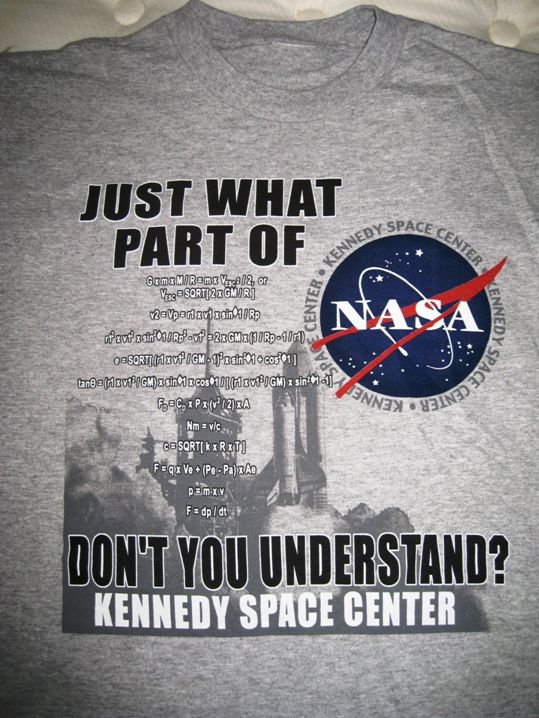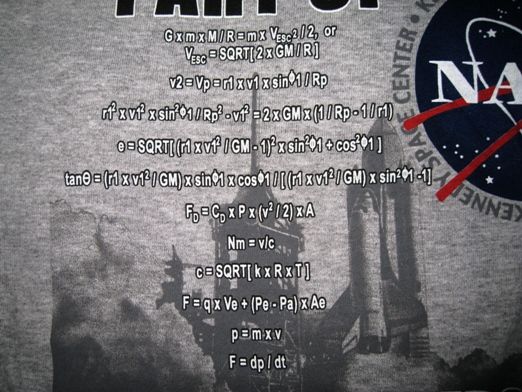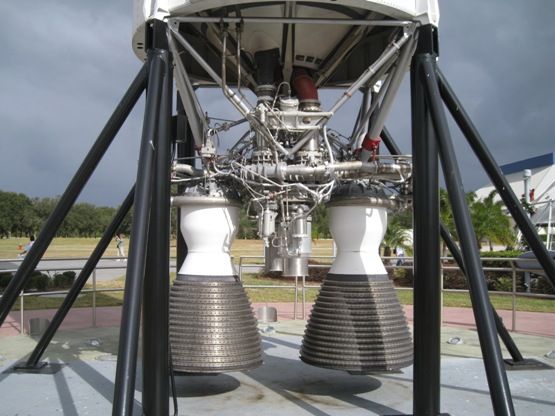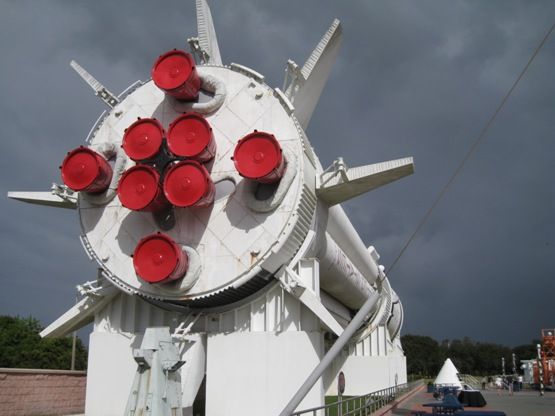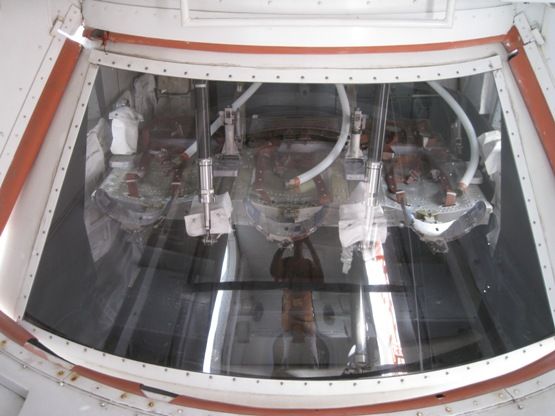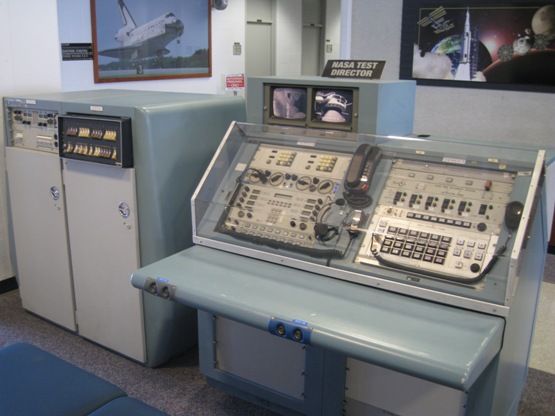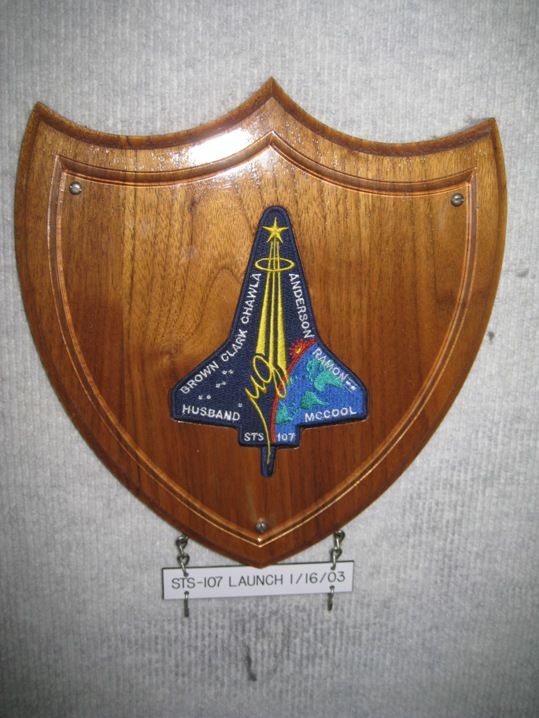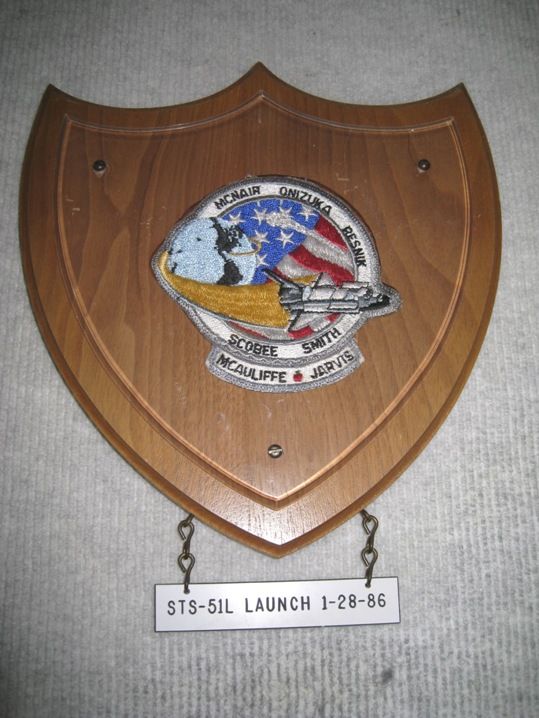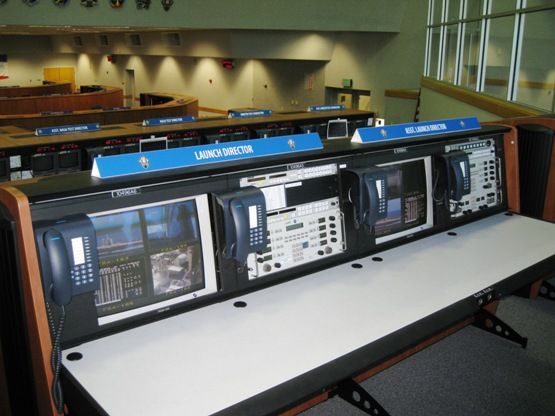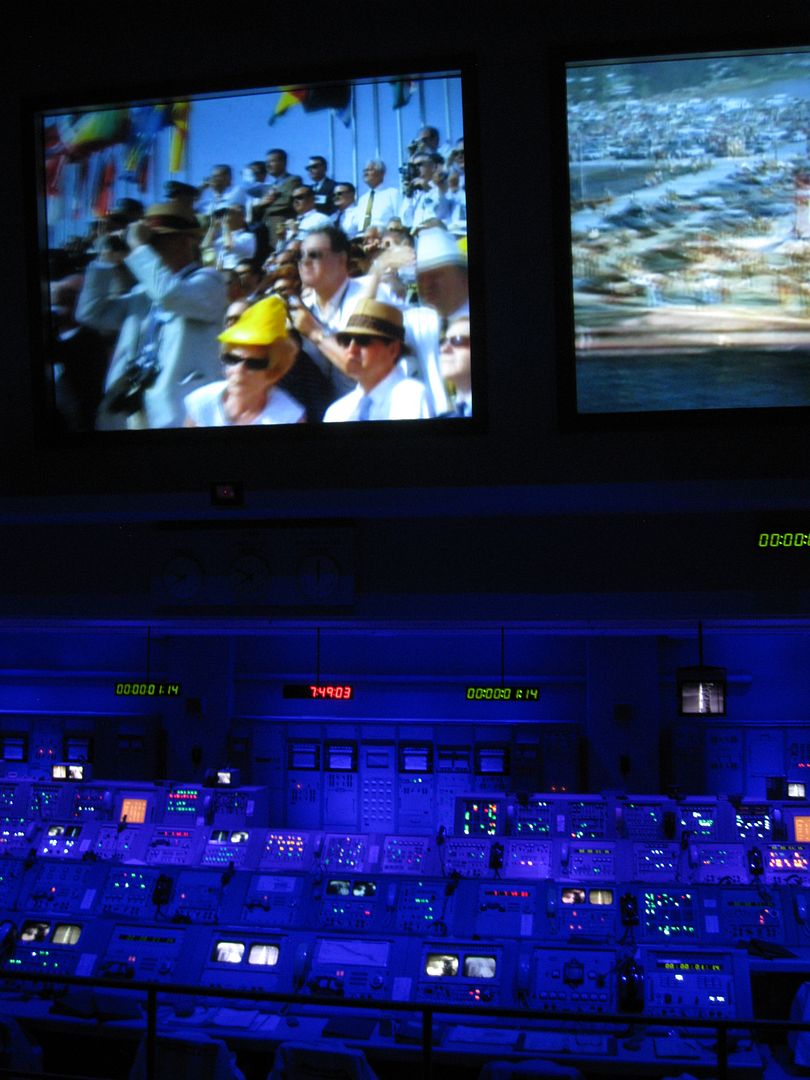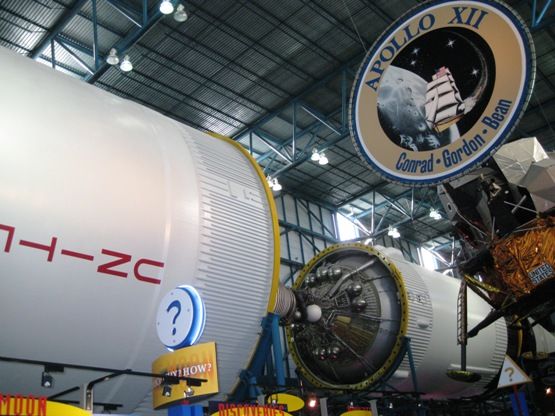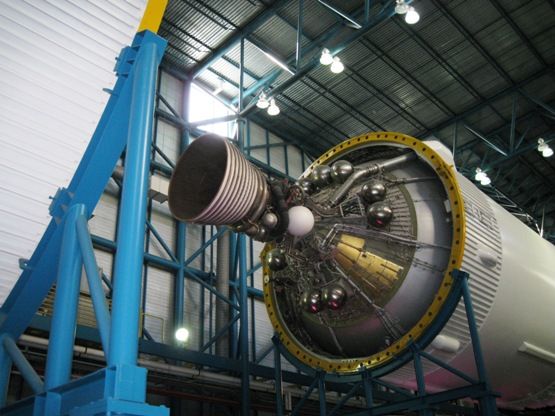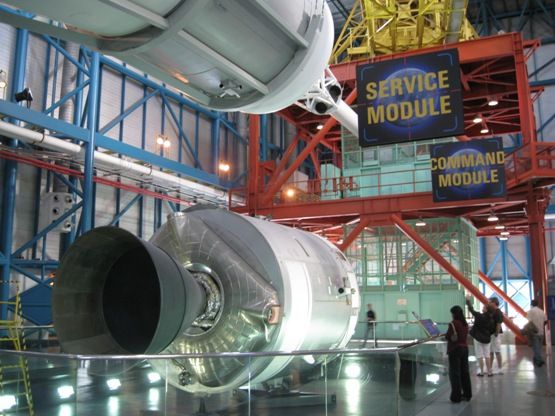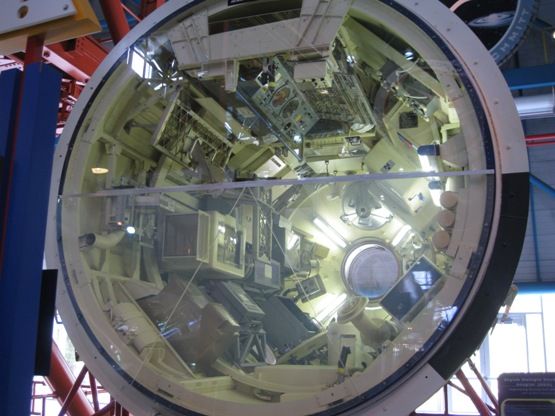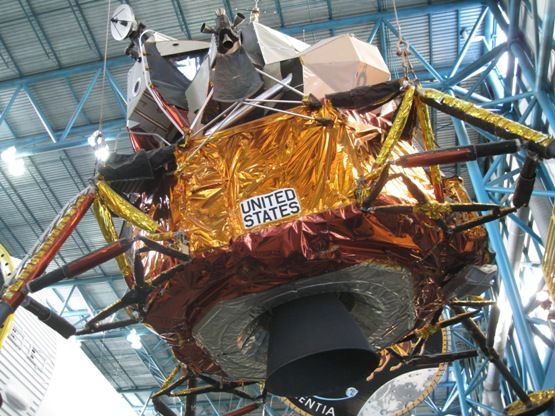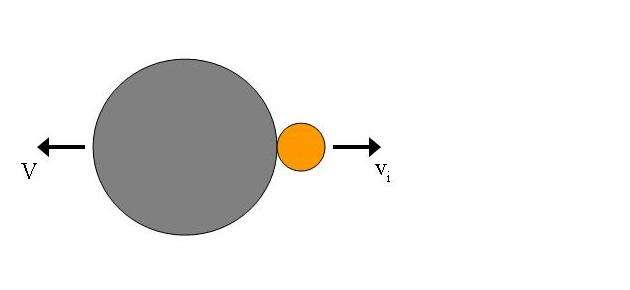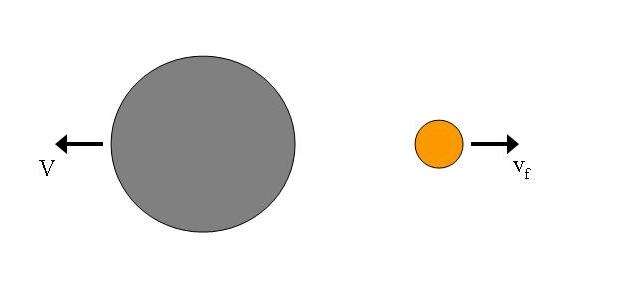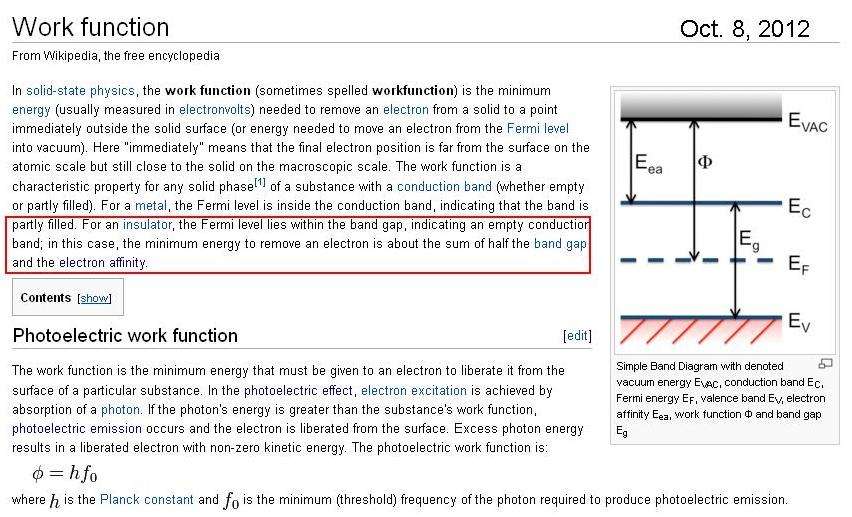As if this needs further convincing, here are those top 10 reasons:
Zz.
Saturday, December 29, 2012
Wednesday, December 19, 2012
Fabiola Gionotti
It is rare that someone from science is one of the finalists for Time Magazine's Person of the Year. It is even rarer that it is a physicist AND a woman. That is what Fabiola Gionotti has accomplished for her effort at the LHC leading up to the apparent discovery of the Higgs.
Read her story at Time's website before it disappears.
Zz.
The announcement caused the kind of global sensation you don’t always see in response to a scientific discovery, and three names earned an equally unusual level of fame — Gianotti, who headed one of the experiments that confirmed the Higgs; her colleague Joe Incandela, who led the other; and Rolf Heuer, the research director of CERN. It was Gianotti who perhaps received the most attention, principally for her leadership role and her manifest gifts but occasionally for a reason as predictable as it is misguided: her gender. Physics is a male-dominated field, and the assumption is that a woman has to overcome hurdles and face down biases that men don’t.
Read her story at Time's website before it disappears.
Zz.
Tuesday, December 18, 2012
Berkeley Lab Open House 2012
In case you weren't there, here's a short video of this year's open house at Berkeley Lab.
I've said it before and I'll say it again. If you have a chance to visit one of these National Labs, you should do it. You'll see your taxpayers money at work in producing something that either drive knowledge, or drive our economy.
Zz.
I've said it before and I'll say it again. If you have a chance to visit one of these National Labs, you should do it. You'll see your taxpayers money at work in producing something that either drive knowledge, or drive our economy.
Zz.
Saturday, December 15, 2012
CERN Becomes A UN Observer
No, I don't mean an UNobserver. I mean a United Nations Observer.
CERN becomes the first physical science entity to be granted the status of an observer at the United Nations.
Zz.
CERN becomes the first physical science entity to be granted the status of an observer at the United Nations.
The lab joins environmental groups and public health agencies as the first physical sciences research organization in the ranks of UN observers. Observer status grants the right to speak at meetings, participate in procedural votes, and sign and sponsor resolutions, but not to vote on resolutions.I will be curious to know if it can affect anything in the UN with such a status. Time will tell.
Zz.
Physics World's Top 10 2012 Breakthrough
Physics World has listed what it considers to be this year's Top 10 breakthroughs. Not surprisingly, the apparent discovery of the Higgs at the LHC took top honors.
I'm glad to say that many of the breakthroughs listed were also covered in this blog! :)
Zz.
I'm glad to say that many of the breakthroughs listed were also covered in this blog! :)
Zz.
Thursday, December 13, 2012
Is There Poop On The Moon?
I swear, those people at Minute Physics must have heard that I visited the Kennedy Space Center last week! How else do you explain this uncanny timing of them producing this video? :)
Zz.
Zz.
Crystal Growth Under Zero Gravity
This is a rather interesting report on the growth of He4 crystal with and without gravity. They even have a video of the growth, which obviously occurs in a very short time.
Here's the synopsis accompanying the video:
Zz.
Here's the synopsis accompanying the video:
There are several limitations to growing crystals on Earth, which is why a group of researchers from Japan have taken to the skies to grow them under zero gravity.
They have successfully grown helium crystals 10 times larger than can be achieved on Earth with ordinary materials and it took just a matter of seconds -- ordinary, classic crystals can take up to a thousand years to reach their final shape.
This was achieved using high pressures, extremely low temperatures (-270oC) and by splashing the crystals with a superfluid.
From 13 December, the paper can be downloaded from http://iopscience.iop.org/1367-2630/14/12/123023/article
Zz.
Wednesday, December 12, 2012
NASA T-Shirt
Yesterday, I posted my trip report to NASA's Kennedy Space Center. Of course, as a tourist, I had to buy something. While there were a few things I would like to get, this one t-shirt caught my eye, and it will probably confirmed to everyone what I nerd I am. Still, at least it is not one of those t-shirts that had Maxwell Equations on it that I have seen way too many times.
This is the front of the shirt.
Here's a closer look at the equations if it isn't clear from that picture:
It's too bad that they had to put all those "x" to indicate a product, which isn't what we normally do when writing such equations, and it also creates a bit of a mess.
Still, I found the t-shirt a bit amusing and had to buy it. I haven't worn it yet (it is winter up here in Chicagoland). The question is, can you identify what each of these equations mean or are supposed to represent?
The back of the shirt has a print of the answer, but I'll hold off in showing that till you had your fun! :)
Zz.
This is the front of the shirt.
Here's a closer look at the equations if it isn't clear from that picture:
It's too bad that they had to put all those "x" to indicate a product, which isn't what we normally do when writing such equations, and it also creates a bit of a mess.
Still, I found the t-shirt a bit amusing and had to buy it. I haven't worn it yet (it is winter up here in Chicagoland). The question is, can you identify what each of these equations mean or are supposed to represent?
The back of the shirt has a print of the answer, but I'll hold off in showing that till you had your fun! :)
Zz.
Tuesday, December 11, 2012
Kennedy Space Center
If you've followed this blog recently, you'll noticed that I missed a stretch of about 10 days with no posting. I was on vacation.
Still, my vacation had a "physics" component to it. As one of my stops, I visited the Kennedy Space Center in Cape Canaveral, Florida. I've never been to this place before, even though I've always wanted to go there especially during the Shuttle era. However, I never made it there till now, which I later found out, has its advantages. I will explain why that is so when we get to that point.
So this is the entrance to the visitor center. As you can see, there are constructions on new facilities that they are building to expand and enhance the visitor center.
We made it to what I jokingly called the rocket graveyard. These cover the history of rocket propulsion that led to NASA sending satellites and manned space craft into space.
They had the bridge that used to connect the launch structure to the space module. So this is what the Apollo astronauts saw when they are walking into the capsule right before launch.
Here's what one of the capsules looks like. Man, was it tight!
I spent a bit of time looking around more of the visit center, but then took a tour that I signed up months ago. This is not your ordinary tour that they have running almost all day at the Space Center. This was a tour of the Launch Control Center. It appears that they started giving this tour about 2 months ago, and supposedly, they have not received any indication right now if it will go on after the New Year. This tour is only done once a day, and limited to less than 25 persons per tour. We were also not permitted to bring anything that we could not carry all the time, i.e. we were not allowed to put things down on the floor and walk away. This was beside the fact that we will be having 2 security escorts while in the building.
Now this is where coming here after the Shuttles had been retired was a plus. It turns out that they had never given the public access to the Launch Control Center (or what they refer to as the Firing Room) till now. In fact, most people working at the Kennedy Space Center have never been allowed to be in such a room. The reason why they are doing it now is because there are no more Shuttle launches. However, the room is still "operational", and it will be modified for NASA next program. That was the reason for all the restrictions and security.
Well, enough of that. Here are pictures that I took of the LCC. We arrived at the building and this was the lobby.
They have a few things on display in the lobby, including a very old console that, I think, was used during the Apollo program.
But what drew my eyes more was this wall of plaques of all the space launches that were done out of this building.
This includes the Apollo 11 mission,
and the first mission of the Space Shuttle
Each of the plaque had a launch date and the date it landed. However, two of the shuttle mission didn't have a "Landed" date, and those of course corresponded to the two tragic shuttle accidents.
If you look closely at where the "Landed" tag should have been, you'll notice that the wall showed a bit more wear than usual. It turns out that NASA employees rub their fingers at these locations when they walked pass them as a sign that these astronauts are always in their thoughts.
We were then taken into an elevator up to the LCC. I don't quite remember seeing the firing room on TV (I'm more familiar with the Command Center in Houston). But it was still an impressive room, and we got to see it from various locations.
This was the view out of the window from the LCC. You can see the shuttle launch pad in the distance, and also the 2-lane gravel path that the crawler took from the shuttle assembly building to the launch pad.
After a long visit to the LCC building, we then got back on our bus and got a tour of the grounds. First off is the shuttle launch pad. I can only imagine what it would look like if the shuttle is all set and primed to go. Of course, I've seen it on TV, but I'm sure it would have been significantly more impressive in person. I would love to know more about their cryogenic systems to produce all those liquid hydrogen and oxygen.
We were then driven around a new launch pad that they are building for the Orion program (did they get full funding for this? I must have missed it). Our tour guide was continually gushing over this to emphasize that NASA is not dead, and that the space program is back in operation and "we are back in business".
We also drove by the crawler, which is now sitting outdoors. If you don't know this, the crawler was the vehicle that brought the upright Space Shuttle (i.e. the orbiter, the external rocket, and the solid rocket boosters) from the assembly building to the launch pad. It literally crawled at about 1 mile per hour. While this may not have been that different than watching grass grows, I wouldn't have minded to see that either!
Our last stop was the Apollo experience. We were dropped off at a building and entered a room that simulated the firing of an Apollo rocket. The equipment in the room was authentic, and the audio and simulate was incredible because one could hear the windows rattled during take off.
After that bone-jarring presentation, we were led into a huge building that housed the Apollo/Saturn V rocket. This was quite impressive. The Saturn V booster rocket alone is HUGE. Look at the 2nd picture that has human scale for you to compare.
We walked along the length of the rocket and saw various stages that separated at different times during launch.
A closer look at the Service Module and the Capsule.
This is the lunar lander, which was the only part of the vehicle that landed on the moon, and which a big part of it gets left behind.
This is the buggy that they used on the moon.
At the end of our visit, on the way out, we saw the construction of a building to house one of the Space Shuttle orbiter. This new attraction will open some time next year. So maybe this is a good reason to come back for another visit.
It was a wonderful experience. But being a physicist, I just wish that we had a tour guide familiar with the scientific/technical aspect of the program. As someone who is used to giving tours at our facilities, I'm always prepared to answer such questions, because you just never know if you get scientists in your audience. And I've had that a few times where physicists or engineers in the tour group started asking more "difficult" or more detailed questions. I supposed one has to know someone working there to be able to get a more personalized tour that will answer a more technical question.
So now you know a little bit of what I did on my last vacation! :)
Zz.
Still, my vacation had a "physics" component to it. As one of my stops, I visited the Kennedy Space Center in Cape Canaveral, Florida. I've never been to this place before, even though I've always wanted to go there especially during the Shuttle era. However, I never made it there till now, which I later found out, has its advantages. I will explain why that is so when we get to that point.
So this is the entrance to the visitor center. As you can see, there are constructions on new facilities that they are building to expand and enhance the visitor center.
We made it to what I jokingly called the rocket graveyard. These cover the history of rocket propulsion that led to NASA sending satellites and manned space craft into space.
They had the bridge that used to connect the launch structure to the space module. So this is what the Apollo astronauts saw when they are walking into the capsule right before launch.
Here's what one of the capsules looks like. Man, was it tight!
I spent a bit of time looking around more of the visit center, but then took a tour that I signed up months ago. This is not your ordinary tour that they have running almost all day at the Space Center. This was a tour of the Launch Control Center. It appears that they started giving this tour about 2 months ago, and supposedly, they have not received any indication right now if it will go on after the New Year. This tour is only done once a day, and limited to less than 25 persons per tour. We were also not permitted to bring anything that we could not carry all the time, i.e. we were not allowed to put things down on the floor and walk away. This was beside the fact that we will be having 2 security escorts while in the building.
Now this is where coming here after the Shuttles had been retired was a plus. It turns out that they had never given the public access to the Launch Control Center (or what they refer to as the Firing Room) till now. In fact, most people working at the Kennedy Space Center have never been allowed to be in such a room. The reason why they are doing it now is because there are no more Shuttle launches. However, the room is still "operational", and it will be modified for NASA next program. That was the reason for all the restrictions and security.
Well, enough of that. Here are pictures that I took of the LCC. We arrived at the building and this was the lobby.
They have a few things on display in the lobby, including a very old console that, I think, was used during the Apollo program.
But what drew my eyes more was this wall of plaques of all the space launches that were done out of this building.
This includes the Apollo 11 mission,
and the first mission of the Space Shuttle
Each of the plaque had a launch date and the date it landed. However, two of the shuttle mission didn't have a "Landed" date, and those of course corresponded to the two tragic shuttle accidents.
If you look closely at where the "Landed" tag should have been, you'll notice that the wall showed a bit more wear than usual. It turns out that NASA employees rub their fingers at these locations when they walked pass them as a sign that these astronauts are always in their thoughts.
We were then taken into an elevator up to the LCC. I don't quite remember seeing the firing room on TV (I'm more familiar with the Command Center in Houston). But it was still an impressive room, and we got to see it from various locations.
This was the view out of the window from the LCC. You can see the shuttle launch pad in the distance, and also the 2-lane gravel path that the crawler took from the shuttle assembly building to the launch pad.
After a long visit to the LCC building, we then got back on our bus and got a tour of the grounds. First off is the shuttle launch pad. I can only imagine what it would look like if the shuttle is all set and primed to go. Of course, I've seen it on TV, but I'm sure it would have been significantly more impressive in person. I would love to know more about their cryogenic systems to produce all those liquid hydrogen and oxygen.
We were then driven around a new launch pad that they are building for the Orion program (did they get full funding for this? I must have missed it). Our tour guide was continually gushing over this to emphasize that NASA is not dead, and that the space program is back in operation and "we are back in business".
We also drove by the crawler, which is now sitting outdoors. If you don't know this, the crawler was the vehicle that brought the upright Space Shuttle (i.e. the orbiter, the external rocket, and the solid rocket boosters) from the assembly building to the launch pad. It literally crawled at about 1 mile per hour. While this may not have been that different than watching grass grows, I wouldn't have minded to see that either!
Our last stop was the Apollo experience. We were dropped off at a building and entered a room that simulated the firing of an Apollo rocket. The equipment in the room was authentic, and the audio and simulate was incredible because one could hear the windows rattled during take off.
After that bone-jarring presentation, we were led into a huge building that housed the Apollo/Saturn V rocket. This was quite impressive. The Saturn V booster rocket alone is HUGE. Look at the 2nd picture that has human scale for you to compare.
We walked along the length of the rocket and saw various stages that separated at different times during launch.
A closer look at the Service Module and the Capsule.
This is the lunar lander, which was the only part of the vehicle that landed on the moon, and which a big part of it gets left behind.
This is the buggy that they used on the moon.
At the end of our visit, on the way out, we saw the construction of a building to house one of the Space Shuttle orbiter. This new attraction will open some time next year. So maybe this is a good reason to come back for another visit.
It was a wonderful experience. But being a physicist, I just wish that we had a tour guide familiar with the scientific/technical aspect of the program. As someone who is used to giving tours at our facilities, I'm always prepared to answer such questions, because you just never know if you get scientists in your audience. And I've had that a few times where physicists or engineers in the tour group started asking more "difficult" or more detailed questions. I supposed one has to know someone working there to be able to get a more personalized tour that will answer a more technical question.
So now you know a little bit of what I did on my last vacation! :)
Zz.
Monday, December 10, 2012
Thursday, November 29, 2012
Does The Universe Have A Purpose?
A fun video, no matter which side of the fence you fall into.
At the very least, you can understand why, if we simply look at it "the way it is, rather than the way you want it to be", science has more evidence in favor of the universe having no purpose than the other way around.
I guess I'm with the e-coli bacteria in the video that asked for "more poop!".
Zz.
At the very least, you can understand why, if we simply look at it "the way it is, rather than the way you want it to be", science has more evidence in favor of the universe having no purpose than the other way around.
I guess I'm with the e-coli bacteria in the video that asked for "more poop!".
Zz.
Wednesday, November 28, 2012
Fermilab's Physics Slam Video
I mentioned earlier about the first Physics Slam at Fermilab, and ended the blog entry with the question on where the video for this event is.
Well, ask and you shall receive. The video for this physics slam is now available online.
Zz.
Well, ask and you shall receive. The video for this physics slam is now available online.
Zz.
How Quickly Does A Photon Reach c?
I've seen this question numerous times. The premise here is that while a photon travels at c in vacuum, it wasn't "born" with that speed. Somehow, after a photon is created at some low speed (zero?), it then accelerates to c. So I often get asked on how quickly does it reach c.
There are several problems with such a question, and this certainly qualifies as a "When did you stop beating your wife?"-type of question. Why? Because it assumes, a priori, that photons CAN have speeds other than c in vacuum. This is not verified. So the idea that a photon gets born with some low speeds is not an idea that has any physical basis, and thus, the starting point is all wrong.
Secondly, there is a problem in reconciling our experimental evidence with such a scenario. Let's look at this carefully.
Say we have a body that is initially at rest. at some point, emits a particle, as shown in the figure below.
The larger body moves with velocity V, while the smaller body moves with velocity v_i. These two values are related to each other via conservation of momentum.
Now, let's say that the smaller body then accelerates, by some means, to some final velocity, as shown below.
There are several problems with such a question, and this certainly qualifies as a "When did you stop beating your wife?"-type of question. Why? Because it assumes, a priori, that photons CAN have speeds other than c in vacuum. This is not verified. So the idea that a photon gets born with some low speeds is not an idea that has any physical basis, and thus, the starting point is all wrong.
Secondly, there is a problem in reconciling our experimental evidence with such a scenario. Let's look at this carefully.
Say we have a body that is initially at rest. at some point, emits a particle, as shown in the figure below.
The larger body moves with velocity V, while the smaller body moves with velocity v_i. These two values are related to each other via conservation of momentum.
Now, let's say that the smaller body then accelerates, by some means, to some final velocity, as shown below.
However, this final velocity v_f has no directly relations to V, i.e. it isn't correlated to V since the conservation of momentum of the two bodies no longer is relevant here. v_f no longer carries any direct information about V.
So let's look at what we know about such a thing. Atomic recoil, electron recoil, and a while bunch of other experiments on photo emission and photon collision experiments have shown that what we measure in such interactions totally conserve momentum. In other words, we measure v_f (since it was already at c for photon), and this v_f is still correlated to V via a direct conservation of momentum. This clearly means that v_f is equal to v_i, and therefore, there is no "acceleration" of photons
This scenario applies to a whole zoo of fundamental particles as well since the same conservation law applies to many such interactions involving these particles.
Zz.
Tuesday, November 27, 2012
What Happens When A Theory Is Wrong?
This has happened a lot of times in the history of physics. However, we could be confronting one right now on a very prominent theory - Supersymmetry.
This article by Marcelo Gleiser briefly looks at how physics often proceeds, and what is the fate of Supersymmetry after so many searches for it have failed to produce anything it is predicting that is unique beyond the Standard Model.
Zz.
This article by Marcelo Gleiser briefly looks at how physics often proceeds, and what is the fate of Supersymmetry after so many searches for it have failed to produce anything it is predicting that is unique beyond the Standard Model.
Given the lack of data in support of supersymmetry after all these years, why is the theory still considered viable?This will become even more interesting if the LHC sees no convincing evidence after it boots its collision energy in a couple of years. While I am certainly interested in the physics, I am equally fascinated to see how the high energy physics community, and the Supersymmetry advocates, handle the outcome that they will get from that run.
The complication comes from the way mathematical models depend on various adjustable parameters. For example, the decay rate of a particle may depend on its mass and the way it interacts with other particles; if certain types of decays aren't seen, parameters can be changed to reflect that. The model may be made to hide from available experiments. And given that technology has more concrete limits than the imagination of theorists, a model may always be beyond the detectable.
How, then, can such types of models be ruled out? Well, simpler versions may be ruled out when the tweaking of parameters becomes so extreme that the model loses its original motivation: it explains nothing and becomes too cumbersome. Or a forbidden particle is discovered. Then there are always the more complicated versions, with more parameters that are harder to rule out.
The point is that there isn't a clear-cut answer. The physicist Max Planck used to say that wrong ideas don't die out, their proponents do. It will be interesting to watch what will happen in the next few years with supersymmetry and its proponents if tests keep producing negative answers.
Zz.
Sunday, November 25, 2012
What Is Touch?
I see this question frequently being asked in public forum, especially on Physics Forums. Hopefully, this video provides a good start in answering such a question.
Zz.
Zz.
Friday, November 23, 2012
Fermilab's First Physics Slam
I'm sure this was a lot of fun and involves a level of performance and entertainment.
Fermilab had its first ever Physics Slam. And from the report, it sounded like it was a Smash! :)
Fermilab had its first ever Physics Slam. And from the report, it sounded like it was a Smash! :)
The occasion was the laboratory's first ever physics slam. A physics slam is kind of like a poetry slam—the five contestants were given 12 minutes each to explain a complex particle physics concept to an auditorium filled with laymen. And they had to do it in the most entertaining way they could, because audience applause determined the winner.
Now, where are the videos of the event?
Zz.
Thursday, November 22, 2012
Why Do Physicists Care About Finding The Higgs?
This is a very short and informative article on why many of us care so much about finding the Higgs. The reasons may be quite different from those understood by the general public. This article, along with the one I posted earlier, might help in correcting several misconceptions about the Higgs.
Happy Thanksgiving to those in the US.
Zz.
Happy Thanksgiving to those in the US.
Zz.
Wednesday, November 21, 2012
The Origins of the Elements
If you have an hour to spare, here's something you might either want to watch, or just listen in the background.
Zz.
Zz.
Tuesday, November 20, 2012
Dance To String Theory
It is no secret that I've made fun of many of these efforts to incorporate physics with dance. I'm sure they are of high artistic caliber, but I question the "reason" for doing such a thing, and the effectiveness of it. In other words, if I don't tell you what this is all about, can you decipher it for yourself?
I've mentioned before several attempts at using various physics topics or principles as a dance motif. Read here, here, here, and here. Add this one to the list.
I'd like to ask this: without invoking or being told about the "physics" behind the dance, can you enjoy the performance as is? If yes, then how come one doesn't sell it as such?
I again am curious about why these things are done. I mean, sure, they'll argue that this is another way to "visualize" various aspects of physics, and visualize this from an artistic point of view. But (i) why; (ii) is this really accurate; (iii) is this really necessary? Did someone who had no idea about physics saw this and suddenly got inspired to either study physics, or support physics? Did someone who didn't quite understand a certain aspect of physics suddenly understands it better after seeing such a performance?
I'm not saying this shouldn't be done. I'm just awfully curious on why and what are the consequences of such a thing. After all, a lot of effort, time, and money were spent for one of these things. It has to mean SOMETHING!
Zz.
I've mentioned before several attempts at using various physics topics or principles as a dance motif. Read here, here, here, and here. Add this one to the list.
The choreographer has been working with Andrew Melatos, a theoretical physicist at Deakin. Melatos is an expert in string theory, the strand of particle physics that attempts to reconcile quantum mechanics and general relativity. The pair's collaboration has led to Multiverse, an "innovative, animated dance work" that is being workshopped before a premiere next year.That sounds like a hoot!
Stewart says Multiverse - taken from the term coined by 19th-century philosopher William James, who put forward the idea of multiple parallel universes - will be a combination of live dance and three-dimensional animation, requiring the audience to wear 3-D glasses.
I'd like to ask this: without invoking or being told about the "physics" behind the dance, can you enjoy the performance as is? If yes, then how come one doesn't sell it as such?
I again am curious about why these things are done. I mean, sure, they'll argue that this is another way to "visualize" various aspects of physics, and visualize this from an artistic point of view. But (i) why; (ii) is this really accurate; (iii) is this really necessary? Did someone who had no idea about physics saw this and suddenly got inspired to either study physics, or support physics? Did someone who didn't quite understand a certain aspect of physics suddenly understands it better after seeing such a performance?
I'm not saying this shouldn't be done. I'm just awfully curious on why and what are the consequences of such a thing. After all, a lot of effort, time, and money were spent for one of these things. It has to mean SOMETHING!
Zz.
Monday, November 19, 2012
Finally, A Direct Detection Of Time Reversal Symmetry Violation In Elementary Particles?
It appears that we now have evidence of a direct detection of time reversal symmetry violation in elementary particles. This detection appears to be clearer and less ambiguous than before, and doesn't rely on the detection of CP violation.
It also seems that this is a result out of BaBar, which came from SLAC's linear collider before it was permanently shut down and converted into the LCLS. So that old gal is still giving us results from her grave!
Zz.
It also seems that this is a result out of BaBar, which came from SLAC's linear collider before it was permanently shut down and converted into the LCLS. So that old gal is still giving us results from her grave!
Zz.
Saturday, November 17, 2012
Top 5 Misconceptions About The Higgs
This appeared a few days ago, but better late than never. It lists the top 5 basic misconception about the Higgs, especially as reported in the popular media.
1. Misconception: The Higgs particle gives other particles mass.Zz.
Correction: The masses of fundamental particles come from interactions with the Higgs field.
"You see this statement all the time, but how would another particle even 'give' another particle mass?" Kruse asks, explaining truly it's the Higgs field that provides mass to fundamental particles, such as quarks, electrons and neutrinos.
The Higgs particle is a consequence of the Higgs field. By discovering the Higgs particle, it shows the Higgs field exists. In the math that physicists use to understand the Higgs boson and field, there is a piece of an equation that they interpret as the existence of a Higgs boson, which they see as a point-like particle resulting from the Higgs field "curling in" on itself, like a knot in a spider's web. Physicists can't interpret the Higgs boson itself to be giving anything mass, but by interacting with other particles, they can argue that the Higgs field is giving resistance to the particles' motion, thereby giving them mass.
2. Misconception: The Higgs field generates the mass of everything.
Correction: The Higgs field generates the mass of about one percent of observable matter and possibly all of dark matter.
The Higgs field generates mass for quarks, which are the building blocks of protons and neutrons. The protons and neutrons, in turn, form the nuclei at the core of atoms, which are the building blocks of molecules, proteins, cells, plants, animals, planets, stars, galaxies and all the stuff we see in the universe. The mass of quarks accounts for only one percent of the mass of a proton or neutron. The other 99 percent of the mass of observable matter comes from the energy that binds protons' and neutrons' constituent quarks together.
It may seem kind of strange to think that the discovery of the Higgs boson, and thereby the existence of the Higgs field, means scientists have discovered an explanation for only one percent of the observable mass of everything we see. But, "that one percent is the mass of the fundamental constituents of the universe," Kruse says, adding that the Higgs field has also incredible consequences for the structure of atoms and molecules. "If the already small mass of electrons was zero, as it would be without a Higgs field, then everything would just disintegrate," he says. "All the atomic structure we are familiar with wouldn’t exist. We wouldn’t exist. There may still be matter, but it wouldn’t be the same. There certainly wouldn’t be life as we know it."
Also, unobservable matter also wouldn't have mass. Scientists believe this unseen, or dark matter, comprises more than 80 percent of the matter of the universe, but it doesn't interact strongly enough with anything to allow its direct observation. Yet, because it has significant mass, "it must interact with the Higgs field and that's another key point," Kruse says. "The Higgs field generates about one percent of observable mass, with the term 'observable' being a very important qualifier, because the Higgs field may be responsible for the mass of all dark matter."
3. Misconception: The Higgs boson creates the Higgs field.
Correction: The Higgs field generates the Higgs boson.
Kruse says that some of the best physics writers have shared this misconception, but the Higgs boson does not create the Higgs field. The opposite is true, because the Higgs boson is a consequence of the Higgs field. The field itself became noticeable to fundamental particles existing in the very early universe about a billionth of a second after the Big Bang, when a fundamental symmetry in the universe, called the electroweak symmetry, broke.
4. Misconception: The Higgs field is what scientists used to call the aether.
Correction: The Higgs field isn't a medium; it's a field of energy.
In the late 1800s, scientists conceived of the aether as a way to explain how light spreads through space. At the time, scientists reasoned that because sound waves needed a medium through which to travel, then so should light. "With the advent of the theory of relativistic electrodynamics, the need for an aether disappeared," Kruse says.
When physicists and writers try to explain the Higgs field, they often describe it as an "icky, gluey" medium where, as particles move through it, the resistance they experience generates their mass. "It's not a horrible way of thinking about it, except that the field is not any type of sticky mechanical substance. It's not a medium, but rather a type of energy that uniformly pervades all of space," Kruse says.
5. Misconception: There was a "eureka moment" for discovering the Higgs boson and the existence of the Higgs field.
Correction: There will never be eureka moments for discoveries such as the Higgs boson and the Higgs field at the Large Hadron Collider.
"I think this experimental misconception is a whole story in itself," Kruse says. "The discovery is based on a laborious accumulation of evidence, which at a certain point we deem strong enough to claim victory, based on a very low probability that it could be due to something else," he says, adding that "there's no single eureka moment where we look at an event and say that's a Higgs."
Labels:
Bad physics,
Elementary Particles,
Higgs,
Mass Media
Friday, November 16, 2012
Why Is Li Atom Ground State In a 1s2 2s Configuration?
You would think that something that is well-established in both physics and chemistry textbooks would not reveal any more surprises, but you (and we) are wrong.
This is an interesting preprint, and it got me captivated for several minutes. First of all, let's set the scenario.
In the periodic table, as one go from H to higher numbered atoms, one start filling up various atomic orbitals. So you have H having 1s^1, He with 1s^2, Li with 1s^2 2s^1, etc.. etc. The interesting thing here is that with just the electron-ion interaction being accounted for, the 2s and 2p states in Li are degenerate, meaning they both have the same energy. So why would the 2s state gets filled first ahead of the 2p?
The standard textbook explanation here is that the 2p states, due to the geometry of the orbitals, tend to get shielded more by the 1s electrons than the 2s states. Thus, the 2p states have a higher energy than the 2s states.
This preprint claim that that explanation is flawed. They showed that what is really at play here is the electron-electron interaction, which is often neglected in many of these multi-electron systems with low atomic number. In their calculation, the interaction between 1s - 2s electrons produced a lower energy state than the interaction between 1s - 2p electrons. This is the main reason for Li ground state to be what it is, and not due to "shielding".
I'm sure this is being submitted for publication somewhere. The paper is not that difficult to follow for advanced undergraduate physics students.
Zz.
Thursday, November 15, 2012
Just The Higgs And Nothing Beyond
The Kyoto conference going on now gets to see more results out of the ATLASand CMS detector at the LHC. So far, they are confirming the data of the apparent Higgs from last year, but nothing much beyond that.
We already heard on the other result that still showed no sign of SUSY. That Standard Model is gripping us real tightly!
Zz
Alas, most of the Higgs results being presented this week at the Hadron Collider Physics symposium in Kyoto, Japan, have been well within our standard understanding. Physicists at ATLAS and CMS, the two largest particle detectors at the LHC, have about double the amount of data they did in July; this new data hasn’t dramatically changed the tentative conclusion that the LHC is seeing a plain-old Standard Model Higgs.
We already heard on the other result that still showed no sign of SUSY. That Standard Model is gripping us real tightly!
Zz
Tuesday, November 13, 2012
Optical Atomic Clock Outperforms Cesium Clock
Our expertise in Metrology seems to be improving quite dramatically nowadays. This is one such example.
Zz.
Now, in Physical Review Letters, Alan Madej and colleagues at the National Research Council in Canada report they have greatly increased the accuracy with which another atomic frequency standard, the optical transition in an isolated strontium ion, can be measured. Furthermore, the precision of their frequency measurement now supersedes that of the existing cesium standard, which could lead to the adoption of a new frequency standard for defining the second as the basic unit of time.You can get a free copy of this paper at the link provided above.
Zz.
Labels:
Atomic and Molecular Physics,
Experiment,
Metrology
Monday, November 12, 2012
More Results NOT In Favor Of SUSY
I will admit that I am not sure of significant this or how big of a "setback" it is for SUSY. But this theory is in need of some hint of an experimental rescue, and it didn't get it from this latest result.
Zz.
If superparticles were to exist the decay would happen far more often. This test is one of the "golden" tests for supersymmetry and it is one that on the face of it this hugely popular theory among physicists has failed.
Prof Val Gibson, leader of the Cambridge LHCb team, said that the new result was "putting our supersymmetry theory colleagues in a spin".
The results are in fact completely in line with what one would expect from the Standard Model. There is already concern that the LHCb's sister detectors might have expected to have detected superparticles by now, yet none have been found so far.This certainly does not rule out SUSY, but it is getting to the same level as cold fusion if positive experimental result does not come soon.
Zz.
Labels:
CERN,
Elementary Particles,
Experiment,
LHC,
Standard Model
Sunday, November 11, 2012
Open Letter to the President: Physics Education
Here's a very timely "letter" to the US President regarding physics education in the US.
Zz.
Zz.
Friday, November 09, 2012
You Can Teach Yourself To Think Like A Scientist - Part 1
It's true, and it isn't that difficult at all!
I'm going to start a series of essays on the things I see everyday in which the person involved either were using the same analytical technique as a scientist would, or the person simply dropped the ball and did not really thought things through as a scientist would. What I'm hoping to show here is that in our everyday lives, we DO make some decision in what to choose, what to believe in, and what to accept as valid. In many cases, these things come instinctively, or they have to be thought out a bit more. However, depending on what methodology we use to arrive at a conclusion, what we accept be not be valid because of the flaw in our reasoning or analysis. And I'm not going to restrict myself just with examples from science. I'm going to point out reasonings, methodologies, flaw in logic, etc.. from all and any parts of our daily lives as I can find.
But to start out with, we'll go back to the world of science and see what we have here. In a post in the Physics Forums, a member asked this question:
First is the "general rule" that this person appear to have observed, which is (to paraphrase):
Low frequency EV wave has more penetrating power than high frequency EM wave.
We are then asked to explain this. But wait a second! Is this true? As scientists, before we answer a question, we have to examine what that question is asking, and whether that question itself is true! This is because, if you try to answer a question that is based on faulty premises, then you're wasting your time on something that isn't true! So let's examine this then.
Now, presumably, this person is quite familiar with x-rays. After all, many of us has had to have one for one reason or another. x-rays have higher frequency than, say, visible light. Yet, we know for a fact that x-rays are more penetrating in our bodies than visible light. What just happened here? I've just given an example that thoroughly contradicts the assertion made in the question. I've shown something where a lower frequency is NOT more penetrating than a higher frequency EM radiation. And I've used an example that practically everyone is familiar with, not some exotic physics experiments that only someone with a PhD can comprehend! In other word, if you think you've drawn some sort of a conclusion, see if you can find an example that contradicts that conclusion. If you do, then it should cause you to ponder, at the very least, if your conclusion is universally valid, valid most of the time, valid some of the time, only works in a special case, or it is truly nonsensical.
Now, as scientists, we always try to see if there are any contradictions to things that we thought we understood. If we have a "rule" or theory that we go by with, and then see something that does not seem to fit that description, this means that our understanding or rule either may not be complete, or that something may be governed by descriptions that are different. In fact, contrary to popular beliefs, scientists LOVE such contradictions, because it means that there are things we don't understand and still need to be studied - things things keep us fascinated AND employed!
The moral of the story here is that, even without understanding the physics of what is going on here, a person without any physics knowledge can already do his/her own self-diagnosis and, at the very least, realize that the assertion made in the question is really false. Low frequency EM radiation does NOT ALWAYS penetrate a material more than high frequency EM radiation. One does this simply by being aware of already-established knowledge that most people already know. This is what I mean by thinking things through analytically, and in this case, using just common knowledge. We all posses this ability, but some of us have it more honed than others. It is this ability that needs to be brought out more often, and more deliberately.
Zz.
I'm going to start a series of essays on the things I see everyday in which the person involved either were using the same analytical technique as a scientist would, or the person simply dropped the ball and did not really thought things through as a scientist would. What I'm hoping to show here is that in our everyday lives, we DO make some decision in what to choose, what to believe in, and what to accept as valid. In many cases, these things come instinctively, or they have to be thought out a bit more. However, depending on what methodology we use to arrive at a conclusion, what we accept be not be valid because of the flaw in our reasoning or analysis. And I'm not going to restrict myself just with examples from science. I'm going to point out reasonings, methodologies, flaw in logic, etc.. from all and any parts of our daily lives as I can find.
But to start out with, we'll go back to the world of science and see what we have here. In a post in the Physics Forums, a member asked this question:
Why is it that lower frequency EM waves are aloud to pass through objects, but high..Ignoring the spelling mistake, and without providing an answer to this question, there are already flawed methodology here in which the person who asked this question did not follow.
... frequency are absorbed, like gamma rays. I would think it would be the opposite. So whats the physical reason?
First is the "general rule" that this person appear to have observed, which is (to paraphrase):
Low frequency EV wave has more penetrating power than high frequency EM wave.
We are then asked to explain this. But wait a second! Is this true? As scientists, before we answer a question, we have to examine what that question is asking, and whether that question itself is true! This is because, if you try to answer a question that is based on faulty premises, then you're wasting your time on something that isn't true! So let's examine this then.
Now, presumably, this person is quite familiar with x-rays. After all, many of us has had to have one for one reason or another. x-rays have higher frequency than, say, visible light. Yet, we know for a fact that x-rays are more penetrating in our bodies than visible light. What just happened here? I've just given an example that thoroughly contradicts the assertion made in the question. I've shown something where a lower frequency is NOT more penetrating than a higher frequency EM radiation. And I've used an example that practically everyone is familiar with, not some exotic physics experiments that only someone with a PhD can comprehend! In other word, if you think you've drawn some sort of a conclusion, see if you can find an example that contradicts that conclusion. If you do, then it should cause you to ponder, at the very least, if your conclusion is universally valid, valid most of the time, valid some of the time, only works in a special case, or it is truly nonsensical.
Now, as scientists, we always try to see if there are any contradictions to things that we thought we understood. If we have a "rule" or theory that we go by with, and then see something that does not seem to fit that description, this means that our understanding or rule either may not be complete, or that something may be governed by descriptions that are different. In fact, contrary to popular beliefs, scientists LOVE such contradictions, because it means that there are things we don't understand and still need to be studied - things things keep us fascinated AND employed!
The moral of the story here is that, even without understanding the physics of what is going on here, a person without any physics knowledge can already do his/her own self-diagnosis and, at the very least, realize that the assertion made in the question is really false. Low frequency EM radiation does NOT ALWAYS penetrate a material more than high frequency EM radiation. One does this simply by being aware of already-established knowledge that most people already know. This is what I mean by thinking things through analytically, and in this case, using just common knowledge. We all posses this ability, but some of us have it more honed than others. It is this ability that needs to be brought out more often, and more deliberately.
Zz.
Measurement of Electron Electric Dipole Using Solid State Experiment
Another example where the so-called "applied" physics field can make as fundamental of a contribution to physics knowledge as any other "pure" field.
A while back, a new and improved measurement of the electron dipole moment using beams of electrons reveals that there is still no internal structure to the electron. A new experiment has significantly improved the ability of a solid state experiment to measure the electron dipole moment.
Zz.
A while back, a new and improved measurement of the electron dipole moment using beams of electrons reveals that there is still no internal structure to the electron. A new experiment has significantly improved the ability of a solid state experiment to measure the electron dipole moment.
The electron’s EDM must be collinear with its spin. Solid-state EDM searches, therefore, typically apply an electric field to a sample and try to measure the induced magnetic signal. Stephen Eckel and colleagues at Yale University in Connecticut perform such an experiment withWith the discovery of the same physics for a magnetic monopole in the spin-glass system, possible discovery of skyrmions, and the recent discovery of Majorana fermions, condensed matter experiments are producing a lot of fundamental results that used to be the sole realm of particle physics. The myth that condensed matter physics does not produce "fundamental knowledge" should be thoroughly destroyed by now.Eu0.5Ba0.5TiO3 , a ceramic with a high density of unpaired, unordered spins, and a sizable ferroelectric response. This means that an external electric field creates an even larger internal electric field for the spins. The authors place a sensitive magnetic pickup loop between two12 -mm-diameter, 1.7-mm-thick disks ofEu0.5Ba0.5TiO3 and apply a series of short electric field pulses to modulate the signal from the EDM and cancel out stray fields.
Eckel et al. conclude that if the EDM is nonzero, it cannot be greater than6.05 x10−25ecm . Compared with the best limit of1.05 x10−27ecm from atomic beam measurements, it may seem like a losing battle to continue with a solid-state approach, but the prospect of new materials and lower noise measurements motivates continued research.
Zz.
Wednesday, November 07, 2012
Another Physicist In the US House of Representatives
Physicist Bill Foster won the seat to the US House of Representatives, beating incumbent Judy Biggert. He will be back in the House after losing his congressional seat 2 years ago.
I mentioned earlier if his talk at last year's TIPP conference on the life of a scientist in the US Congress. Here's a link to the power point document of that talk. Click on his talk titled "Applications of Analog Circuit Design to Life as a Scientist in the United States Congress".
Zz.
Edit 11/9/2012: More coverage on this can be found at PhysicsWorld.
I mentioned earlier if his talk at last year's TIPP conference on the life of a scientist in the US Congress. Here's a link to the power point document of that talk. Click on his talk titled "Applications of Analog Circuit Design to Life as a Scientist in the United States Congress".
Zz.
Edit 11/9/2012: More coverage on this can be found at PhysicsWorld.
Monday, November 05, 2012
Saturday, November 03, 2012
"Ridges" In High-Energy Collisions
It looks like Ruffles potato chips are not the only ones that have ridges.
New results out of the CMS detector at the LHC seems to produce "ridge"-like structure in the collision data between proton-lead. This observation has been detected before.
Zz.
New results out of the CMS detector at the LHC seems to produce "ridge"-like structure in the collision data between proton-lead. This observation has been detected before.
The first data from proton–lead collisions at the Compact Muon Solenoid (CMS) experiment at the Large Hadron Collider (LHC) at CERN include a "ridge" structure in correlations between newly generated particles. According to theorists in the US, the ridge may represent a new form of matter known as a "colour glass condensate".Of course, as expected, theorists are already out in force presenting various scenarios to explain this phenomenon. We simply have to wait for more data to come in before we can make any kind of rational decision on this.
This is not the first time such correlations have been seen in collision remnants – in 2005, physicists working on the Relativistic Heavy-Ion Collider (RHIC) at Brookhaven National Laboratory in New York found that the particles generated in collisions of gold nuclei had a tendency to spread transversely from the beam at very small relative angles, close to zero. A similar correlation was seen in 2010 at CMS in proton–proton collisions and then later that year in lead–lead collisions.
Zz.
Labels:
CERN,
Experiment,
High energy physics,
LHC,
Nuclear Physics
Thursday, November 01, 2012
Oliver Heaviside
This month's issue of Physics Today has a terrific brief biography of Oliver Heaviside. If you've studied physics, mathematical physics, or even electrical engineering, then you would have encountered and used the fruits of his labor.
In physics, there many many of these unsung heroes that do not get the public recognition that they should. It is only through articles such as this, and highlighting them in blogs such as this one, that these figures will at least be known to a few more people that have never heard of them.
Zz
In physics, there many many of these unsung heroes that do not get the public recognition that they should. It is only through articles such as this, and highlighting them in blogs such as this one, that these figures will at least be known to a few more people that have never heard of them.
Zz
Labels:
Electromagnetic Field,
History,
Mathematics,
Physics people
Wednesday, October 31, 2012
So Light Is A Particle In This Demo?
I love these videos coming out of JLab's Forstbite theater. They're hilarious and usually quite educational as well.
However, this time I think the "evidence" that they are using to show that light is a particle isn't that obvious.
Certainly their conclusion is correct that (i) no matter how bright (intense) the red laser is, it cannot activate the fluorescence and (ii) the green laser has a higher energy and thus, can cause the fluorescence, no matter how weak the intensity. However, all this does is show that the intensity does not correlate to the energy.
Now, if one understands the photoelectric effect picture and the Einstein's model, then one can see that this is ONE aspect of that model, which points to the photon picture. But this is just ONE aspect of the model. By itself, it isn't obvious from this experiment that light is a particle.
I think experiments such as the which-way experiment are the ones that would have a more solid claim of showing that light is a particle.
Zz.
However, this time I think the "evidence" that they are using to show that light is a particle isn't that obvious.
Certainly their conclusion is correct that (i) no matter how bright (intense) the red laser is, it cannot activate the fluorescence and (ii) the green laser has a higher energy and thus, can cause the fluorescence, no matter how weak the intensity. However, all this does is show that the intensity does not correlate to the energy.
Now, if one understands the photoelectric effect picture and the Einstein's model, then one can see that this is ONE aspect of that model, which points to the photon picture. But this is just ONE aspect of the model. By itself, it isn't obvious from this experiment that light is a particle.
I think experiments such as the which-way experiment are the ones that would have a more solid claim of showing that light is a particle.
Zz.
Tuesday, October 30, 2012
The Case Against Cold Fusion
If there ever is a blog article that has compiled an amazing history of Cold Fusion, this one could be it. Jennifer Ouellette at Cocktail Physics has updated an article on this topic due to a new film called "The Believers". This article is full of other links and references that you might also want to read, and it also includes description and comments on the effort to separate "cold fusion" from low-energy nuclear reaction (LENR).
Zz.
Zz.
Monday, October 29, 2012
E=mc^2 Is Incomplete
I wonder if people who do not study physics actually realize that the actual equation has another term in it?
I lost count how many times someone has told me that since E=mc^2, and photon has energy, then it MUST have mass!
Zz.
I lost count how many times someone has told me that since E=mc^2, and photon has energy, then it MUST have mass!
Zz.
Saturday, October 27, 2012
The Beginning and End of the Universe
If you have 1 hr and 10 minutes to spare, you might want to watch/listen to this video (you can play it in the background - there's not that much to see). Especially if you are a layman and want to know what physics says about the topic, this video will be of interest to you.
Zz.
Zz.
Thursday, October 25, 2012
Single-Pixel Digital Ghost Holography
Hey, just in time for the Halloween season, we see this paper being published in PRA.
Zz.
Holographic imaging is typically done by splitting a laser beam in two, shining one beam on an object and then letting that modified light interfere with a reference beam that does not hit the object. The recorded interference pattern can be read out with another laser to form a three-dimensional real image. By using multipixel electronic cameras rather than photographic film, researchers can computationally analyze and process the data for better effect. Clemente et al. modify this setup for ghost imaging by replacing the camera with a single-pixel detector (as conventionally used in ghost imaging) by using a randomly structured optical beam and scanning for a set of discrete phase shifts in the reference beam (that is, the beam not directly influenced by the object).Just don't do this while wearing you ghoulish costumes.
Zz.
Wednesday, October 24, 2012
More Evidence of No Hidden Variables
The idea of quantum and contextuality is being tested in this latest report.[1]
Zz.
[1] C. Zu, Y-X. et al., Phys. Rev. Lett. 109, 150401 (2012).
The experimental setup and techniques are simple, elegant, and quite well controlled. The research group had little room for error, since the discrepancy between the classical bound (or inequality) imposed by the Yu-Oh formulation of SIC and the value predicted by quantum mechanics is tiny (only aboutOf course, if you read further, it doesn't rule out all of the classical noncontextuality due to the nagging problem with many photon systems - the detection loophole. Still, if you go by the body of evidence, the QM scenario has shown perfect agreement with experiments so far.4% ). Despite unavoidable experimental uncertainties, the measurements by Zu et al. violated the classical bound (thus ruling out noncontextuality) by about5 standard deviations, irrespective of the prepared system’s state. This statistically significant result sets a very good benchmark for experimental SIC with a single quantum system.
Zz.
[1] C. Zu, Y-X. et al., Phys. Rev. Lett. 109, 150401 (2012).
Monday, October 22, 2012
Using Muons From Cosmic Rays To Peek Into Fukushima?
What a clever idea!
A PRL paper published last week[1] had an interesting proposal. Use muons generated in the upper atmosphere due to cosmic ray collisions to peek into the Fukushima reactors.
Zz.
A PRL paper published last week[1] had an interesting proposal. Use muons generated in the upper atmosphere due to cosmic ray collisions to peek into the Fukushima reactors.
To radiograph inaccessible parts of Fukushima reactors, Borozdin et al. propose a similar approach based on muon detectors placed right outside the reactor building. The authors compared two imaging methods: attenuation radiography, which measures how muons are absorbed inside the reactor, and scattering radiography, which monitors how their path is deviated. They show that scattering radiography would deliver more reliable images of the nuclear core after only a few weeks of measurement, allowing the visualization of melted fuel as well as debris.That report has a link to the PRL paper that you can get under the Creative Commons license.
Zz.
[1]K. Borozdin et al.,Phys. Rev. Lett. 109, 152501 (2012).
Saturday, October 20, 2012
Is This What It Looks Like To "Learn" Quantum Physics?
When I first saw this piece, I didn't want to comment on this because, frankly, it's one of the most ridiculous, irrelevant, and inaccurate report that I've ever seen. But I couldn't help myself. So here it is.
This Gizmodo article highlights some "art", or photography snapshot of blackboards that supposedly show how it looks like when one "learns" quantum physics. The photos show various shots of messy, jumbled up scribbles all over the place. There was no explanation anywhere on where exactly these were taken, or under what circumstances (was it after a class, was it after two people discussing something, was it in someone's office?).
I will tell you why I consider this to be utterly ridiculous and irrelevant:
1. Everyone who does physics knows that we tend to have either blackboards or whiteboards in our offices. I have one. It is used quite a lot. In fact, we have white boards along the hallways of our offices. Frequently, when we talk and discuss things, we go to one of such boards to either illustrate our ideas, or work something out. Inevitably, after this is done many, many times, the board looks very much like the mess you see in those photos. It has nothing to do with learning quantum physics. It has everything to do with performing one's job. This is not philosophy where esoteric ideas are thrown out verbally. Physics (and sciences in general), mathematics, and engineering all require visual illustrations and descriptions. Any kind of discussion inevitably will require writing down something, be it a piece of paper, a board, or a cocktail napkin!
2. The point where these scribbles are indecipherable seems to imply that this is unique to physics, or to learning quantum physics. Nonsense! Put a bunch of musical notes on the board. I'm musically illiterate, and they might as well be a bunch of gooblygook. So why would a bunch of mathematical symbols be any different? This is not unique to physics. Look at something that you are not an expert in, and you should EXPECT to see a bunch of things that you don't understand. Is this that difficult to comprehend?
Zz.
This Gizmodo article highlights some "art", or photography snapshot of blackboards that supposedly show how it looks like when one "learns" quantum physics. The photos show various shots of messy, jumbled up scribbles all over the place. There was no explanation anywhere on where exactly these were taken, or under what circumstances (was it after a class, was it after two people discussing something, was it in someone's office?).
I will tell you why I consider this to be utterly ridiculous and irrelevant:
1. Everyone who does physics knows that we tend to have either blackboards or whiteboards in our offices. I have one. It is used quite a lot. In fact, we have white boards along the hallways of our offices. Frequently, when we talk and discuss things, we go to one of such boards to either illustrate our ideas, or work something out. Inevitably, after this is done many, many times, the board looks very much like the mess you see in those photos. It has nothing to do with learning quantum physics. It has everything to do with performing one's job. This is not philosophy where esoteric ideas are thrown out verbally. Physics (and sciences in general), mathematics, and engineering all require visual illustrations and descriptions. Any kind of discussion inevitably will require writing down something, be it a piece of paper, a board, or a cocktail napkin!
2. The point where these scribbles are indecipherable seems to imply that this is unique to physics, or to learning quantum physics. Nonsense! Put a bunch of musical notes on the board. I'm musically illiterate, and they might as well be a bunch of gooblygook. So why would a bunch of mathematical symbols be any different? This is not unique to physics. Look at something that you are not an expert in, and you should EXPECT to see a bunch of things that you don't understand. Is this that difficult to comprehend?
Zz.
Thursday, October 18, 2012
Does The US Really Not Have Enough Skilled Workers?
This is a topic that is related to something that was talked about in the last presidential debate between Barack Obama and Mitt Romney. The moderator asked whether jobs in assembling electronics such as iPhone, iPad, etc. can be brought back to the US. You may read the responses on your own from that news link.
However, later on in the news article, this issue came up about the lack of industrial engineers in the US as one reason Steve Jobs gave for being unable to have such manufacturing jobs in the US.
Interestingly enough, what industries seem to tend not want to do, those in Academia continue to practice such things. We seldom get postdocs who are completely compatible with the skills that we are looking for. So it is a given that we try to nurture and train them with new skills, so much so they become experts in those areas by the time they are done. This is one clear example on why certain organizations should not be run like a business!
Zz.
However, later on in the news article, this issue came up about the lack of industrial engineers in the US as one reason Steve Jobs gave for being unable to have such manufacturing jobs in the US.
There's another catch, and it's one that politicians don't like to talk about: China has many more skilled engineers than the United States does.Now this is interesting in the sense of timing, because last week, Science journal website published an interesting review of a book at attacks such a point of view and put the blame squarely on the industries that complained on such lack of expertise. The book is titled: "Why Good People Can't Get Jobs: The Skills Gap and What Companies Can Do About It." It was written by Peter Cappelli, a professor of management and director of the Wharton School’s Center for Human Resources at the University of Pennsylvania.
Steve Jobs, Apple's late CEO, brought the issue up during an October 2010 meeting with President Obama. He called America's lackluster education system an obstacle for Apple, which needed 30,000 industrial engineers to support its on-site factory workers.
"You can't find that many in America to hire," Jobs told the president, according to his biographer, Walter Isaacson. "If you could educate these engineers, we could move more manufacturing plants here."
That's because the book resolves the vexing conundrum of how two conflicting narratives about high-skilled employment have coexisted in our national conversation. On the one hand, countless unemployed or underemployed workers with perfectly good skills, education, and experience are struggling through a severe job drought, many sending out hundreds of applications and resumes to no avail. On the other hand, employers (especially in technical fields) complain of great difficulty finding workers, citing serious gaps between the requirements of available jobs and the skills of the workforce. One company that Cappelli mentions didn’t find a single worker that it considered qualified among 25,000 applicants for a fairly ordinary engineering job. Employers and their organizations fault an inadequate school system that fails to prepare Americans and restrictive immigration laws that prevent employers from importing the skilled workers they need from abroad.He wrote in particular about companies getting "lazy" in trying to not only hire someone with a potential to do an amazing job, but also the lack of patience in recruiting someone and providing adequate training.
The main reason that companies aren’t finding the workers they seek in an ocean of available ability, Cappelli believes, is that in recent decades, for reasons he explains, those companies have allowed their traditional human resources (HR) departments and training programs to atrophy. Another reason is that some complaining companies simply offer too little money to attract the people they want.There's more, so you should either read the entire article, or get the book (which I intend to do). Now, wouldn't it be more interesting if reporters (or debate moderators) actually do their homework and read about these things way ahead of time before they ask politicians and CEOs such questions? I would love to hear these CEOs try to respond to what has been brought up in this book.
The current lack of adequately staffed HR departments, and companies’ refusal to teach workers on the job, have combined to produce what the book terms “a Home Depot view of the hiring process, in which filling a job vacancy is seen as akin to replacing a part in a washing machine. … Like a replacement part, job requirements have very precise specifications. Job candidates must fit them perfectly or the job won’t be filled.”
Interestingly enough, what industries seem to tend not want to do, those in Academia continue to practice such things. We seldom get postdocs who are completely compatible with the skills that we are looking for. So it is a given that we try to nurture and train them with new skills, so much so they become experts in those areas by the time they are done. This is one clear example on why certain organizations should not be run like a business!
Zz.
Wednesday, October 17, 2012
Angry Birds Bumps With CERN
So I don't have any clue on what would be the outcome of such a "marriage". Still, it appears that Rovio, the makers of the wildly-popular Angry Birds (and Angry Pigs) games are teaming up with CERN to come up with some educational games.
Zz.
Rovio told TechCrunch the collaboration will involve co-producing learning support materials with CERN — including, initially, books and a board game. More products will be added later, the company said. We’ve also reached out to CERN to ask for more details and will update with any response.Er... ok. I am certainly curious to see what they come up with. Angry photons smashing into fat, lazy quarks?
“Modern physics has been around for 100 years, but it’s still a mystery to many people. Working together with Rovio, we can teach kids quantum physics by making it fun and easy to understand,” said CERN’s Head of Education, Rolf Landua, speaking at the Frankfurt Book Fair where the Rovio launch took place.
Zz.
Tuesday, October 16, 2012
The Origin Of Quantum Physics
Another educational and entertaining video. This time, on the origin of quantum physics.
And to think that it all started by a light bulb!
Zz.
And to think that it all started by a light bulb!
Zz.
Felix Baumgartner's Supersonic Speed
Not that this is a puzzle, but here's a simple explanation on how Felix Baumgartner's achived a supersonic speed during his free fall.
I still think this is a crazy thing to do. Fascinating, sure, but still, CRAZY! :)
Zz.
I still think this is a crazy thing to do. Fascinating, sure, but still, CRAZY! :)
Zz.
Monday, October 15, 2012
No Supersolid In New Experiment
OK, there are two separate issues here.
First, a new experiment, done by the person responsible for the first announcement of the possible discovery of supersolid, has now shown no evidence for that.
Have any religious leaders nowadays done such a thing? And yet, there are still people out there who insist that science is a religion?
Zz.
First, a new experiment, done by the person responsible for the first announcement of the possible discovery of supersolid, has now shown no evidence for that.
Many other theoretical and experimental results finally convinced Chan to redo the experiments. With postdoctoral researcher Duk Kim, he completely redesigned the torsional oscillator, taking every precaution to eliminate space for elastic helium. This time, the changes in oscillation previously attributed to a supersolid state were completely absent.Which brings me to my second issue here of the utmost respect we all should have to Moses Chan for illustrating what a true scientist should do when faced with a contradicting evidence. Here is a person who received quite a coverage and reception when the first supersolid discovery was announced. Yet, he continues to investigate the effects in light of the responses he got, and now, after redoing the experiment and found that his original conclusion was wrong, he went ahead and published it! (Taleyarkhan, are you paying attention to all this?)
Chan realizes that this almost closes the book on supersolid helium. ”I’m in an awkward position, since we started the whole damn thing,” says Chan. “But I’m glad we were the ones who found the explanation.” Beamish agrees that these are extremely subtle effects, which is why it took so long to sort them out: “I give Moses the greatest credit for all the years he spent trying to find out what it was, rather than trying to prove it was what he said it was.” He also notes that the hunt for supersolids actually seeded new research on what has become known as quantum plasticity—the tendency of a material to deform macroscopically based on its quantum properties.
Have any religious leaders nowadays done such a thing? And yet, there are still people out there who insist that science is a religion?
Zz.
Wineland and Haroche's PRL Papers
On the heels of AIP's free listing of the papers by this year's Physics Nobel Prize winners, the APS is making available for free the papers by these two authors that were published in PRL.
Zz.
Zz.
Sunday, October 14, 2012
Wednesday, October 10, 2012
AIP Papers By This Year's Nobel Prize Winners
The AIP has generously provided a list of papers from their journals that were authored/coauthor end by this year' physics Nobel prize winners. I think you get all, if not most, of the papers for free.
Zz.
Zz.
Tuesday, October 09, 2012
2012 Physics Nobel Prizes
This one certainly came out of nowhere.
The 2012 Nobel Prize for Physics has been awarded to Serge Haroche and David Wineland.
The Nobel website does have a more in-depth description of it for the laymen.
Still waiting for a woman to win the Physics Nobel Prize in my lifetime.
Zz.
The 2012 Nobel Prize for Physics has been awarded to Serge Haroche and David Wineland.
The Nobel citation said the award was for "ground-breaking experimental methods that enable measuring and manipulation of individual quantum systems".... which is rather vague!
The Nobel website does have a more in-depth description of it for the laymen.
Still waiting for a woman to win the Physics Nobel Prize in my lifetime.
Zz.
Labels:
news,
Nobel Prize,
Physics people,
Quantum mechanics
Monday, October 08, 2012
Work Function And Photoemission Threshold
It is no secret to anyone who has read this blog for a while that I do not like Wikipedia. I think that there's a fundamental flaw with the whole concept and philosophy of it. While I think that it may be useful to many who need a quick lookup for something, it is unfortunate that even more are using it almost as their primary source of information. And this is scary considering that (i) the validity of the information being presented is never guaranteed and (ii) the pedagogical presentation of the material is often shoddy, making the subject even more confusing.
I often get asked to look at such-and-such Wikipedia entry, or someone is trying to convince me of something and using a Wikipedia entry as a "reference" to back up his/her argument. It is usually during such instances that I find inaccuracies, confusing statements, and something outright errors in such entries. I was doing my own search on something a few minutes ago, and I decided, out of curiosity, to see what Wikipedia has to say about "Work Function". Now, keep in mind that this is a common terminology, especially for physics students, since the photoelectric effect is a "must-know" topic for these students. One would think that this should be a topic that a Wikipedia entry would get it right, considering how many people would look up such a thing, AND, the fact that errors and inaccuracy would, by now, be ironed out.
WRONG!
This is what I saw on the Wikipedia page TODAY.
I posted today's date in the screen capture as a date stamp on when this was viewed.
The offending passage has been highlighted with a red box. Let's look at it closely, shall we?
The description here is on what happened for an insulator (or a semiconductor, for that matter). The figure shown is the simplified band diagram for such a system (i.e. an intrinsic semiconductor, for example), and defines the various quantities such as the work function, band gap, electron affinity, etc. The problematic statement says this:
Whoever wrote this is STILL thinking that the work function (Phi) is still the minimum energy needed to produce photoemission, as in the case of a metal. This is FALSE, and anyone who looks at the band diagram can tell. Half of the band gap plus the electron affinity is the work function Phi, but this is the energy between the vacuum level and the Fermi level. The Fermi level for insulator/semiconductor has NO STATES, and thus, no electrons to excite! After all, it resides in the band gap! So what is being excited here?
For an insulator/semiconductor, while the work function may still be defined as the energy between the Fermi level and the vacuum level, it no longer corresponds to the photoemission threshold! The photoemission threshold now is the full band gap energy PLUS the electron affinity. You need to excite, at the minimum, the electrons from the top of the valence band to the vacuum level. One can see this clearly by looking at the band diagram in the figure.
I hope no one was using on this Wikipedia entry for something useful or important.
Zz.
I often get asked to look at such-and-such Wikipedia entry, or someone is trying to convince me of something and using a Wikipedia entry as a "reference" to back up his/her argument. It is usually during such instances that I find inaccuracies, confusing statements, and something outright errors in such entries. I was doing my own search on something a few minutes ago, and I decided, out of curiosity, to see what Wikipedia has to say about "Work Function". Now, keep in mind that this is a common terminology, especially for physics students, since the photoelectric effect is a "must-know" topic for these students. One would think that this should be a topic that a Wikipedia entry would get it right, considering how many people would look up such a thing, AND, the fact that errors and inaccuracy would, by now, be ironed out.
WRONG!
This is what I saw on the Wikipedia page TODAY.
I posted today's date in the screen capture as a date stamp on when this was viewed.
The offending passage has been highlighted with a red box. Let's look at it closely, shall we?
The description here is on what happened for an insulator (or a semiconductor, for that matter). The figure shown is the simplified band diagram for such a system (i.e. an intrinsic semiconductor, for example), and defines the various quantities such as the work function, band gap, electron affinity, etc. The problematic statement says this:
For an insulator, the Fermi level lies within the band gap, indicating an empty conduction band; in this case, the minimum energy to remove an electron is about the sum of half the band gap and the electron affinity.The first part of that paragraph which says ".... For an insulator, the Fermi level lies within the band gap, indicating an empty conduction band ..." is OK. However, the second part is very puzzling and an outright error : "... in this case, the minimum energy to remove an electron is about the sum of half the band gap and the electron affinity ..."
Whoever wrote this is STILL thinking that the work function (Phi) is still the minimum energy needed to produce photoemission, as in the case of a metal. This is FALSE, and anyone who looks at the band diagram can tell. Half of the band gap plus the electron affinity is the work function Phi, but this is the energy between the vacuum level and the Fermi level. The Fermi level for insulator/semiconductor has NO STATES, and thus, no electrons to excite! After all, it resides in the band gap! So what is being excited here?
For an insulator/semiconductor, while the work function may still be defined as the energy between the Fermi level and the vacuum level, it no longer corresponds to the photoemission threshold! The photoemission threshold now is the full band gap energy PLUS the electron affinity. You need to excite, at the minimum, the electrons from the top of the valence band to the vacuum level. One can see this clearly by looking at the band diagram in the figure.
I hope no one was using on this Wikipedia entry for something useful or important.
Zz.
Subscribe to:
Posts (Atom)
